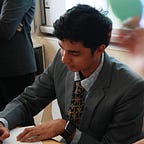The Arctic Code Vault and its importance for humanity.
Deep into the Arctic circle, isolated on the snow-covered Archipelago of Svalbard is the Global Seed Vault. This hosts an extremely important resource for the future of humankind. Seeds. It stores millions of seeds from across the world, in order to preserve them in case of an apocalyptic event.
A quick brisk walk away from the Global Seed Vault is an old coal mine, now owned by GitHub. It stores another extremely important resource for the future of humankind, code.
GitHub is home to a huge amount of open-source software, a lot of which we all are dependent upon for our modern way of life. Millions of people write open-source code to make applications which make our world tick. A lot of software which we use daily is open source for example:- Mozilla Firefox, VLC player, Bitcoin, Python, C compilers etc. All of this code is written for free and our modern, tech-rich lives depend on it.
On February 2nd 2020 (02/02/2020), a snapshot was taken of every active repository, pieces of software, on GitHub and stored as QR codes. These were imprinted on reels of silver halides films and preserved in the Arctic World Archive. These are built to last for more than 1000 years.
A thousand years is a very long time. Ancient ruins such as Angkor Wat, Great Zimbabwe, and Macchu Picchu had not yet been built a thousand years ago. Nevertheless, we can consider and plan for a broad range of possibilities over the next 1,000 years. This program builds on the best ideas we have today.
Our world is powered by open-source software. It is a reflection of modern civilization and has become part of humanity’s shared heritage. GitHub plans to preserve it for future generations.
In the event of an apocalypse, hardware will not stand the test of time. There also exists a possibility that in future generations, our modern computers might not exist. This is why GitHub is storing their software.
The idea originated before 2016 when a company Piql decided to use film as a medium to preserve data and store it for the future. They developed a unique method of putting binary data as well as human-readable text on the film. It contained instructions to decrypt the data using their machines which was also going to be left in the vault along with the reels of film.
The founder of Piql says that he wanted to store the memories of the world in this vault. The memories of what makes us who we are. These can be anything from stories to art. And also code. Software is largely responsible for shaping human history. Times have changed along with the changes in software. So what better way to tell the story of humanity in the 21st century than through open-source, public driven, free-to-all code. So, GitHub partnered with Piql to make this incredible dream come to life.
It is like a time-capsule that shows a time where the whole world runs on software which has open-source in it. It will help us capture the essence of the 21st century and pass it on for generations to see and learn from. So in the spring of 2020, during the perpetual light of the midnight sun, these reels were transported and stored in the Arctic Code Vault.
Their next move is to maintain all of their data on multiple locations to protect it from being lost due to various circumstances. They want to have a 10,000-year record of every public repository on GitHub. The impact of this on the understanding of human history is going to be phenomenal.
Along with the reels of film which contain the code, the vault also contains a human-readable index called the Tech Tree, which explains the technical history and, more importantly, the cultural context behind the code stored in the vault.
The preservation and passing on of knowledge have, for a long time, been a constant effort for humans. But as we see the need for doing this, we have taken several steps towards spreading humanity’s knowledge and preserving it for the future. The best example of the effort to spread this knowledge is the golden records aboard spacecrafts Voyager 1 and 2.
This might be the biggest ever effort to preserve knowledge across generations to better understand our world. Just imagine how big of a difference it would have made to the history of humans and cultures if we had such a way of preserving all the knowledge that was lost many many years ago. Our understanding of the world would have been completely different then what it is now if we had access to such information even 50 years ago.
The impact it will make on the future’s technological architecture is unclear, but it will surely tell a story of how revolutionary free-code can be for humanity and how the wisdom of the crowd is always mighty.
Thank you for reading :) Please subscribe for more such articles. Follow me on Instagram, Twitter and GitHub. Also, check out my Medium articles.
